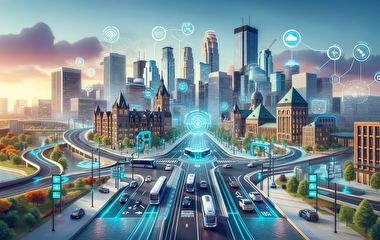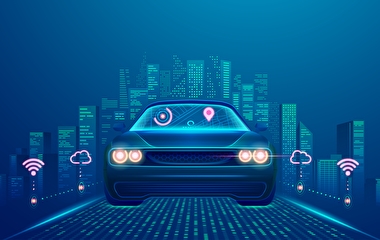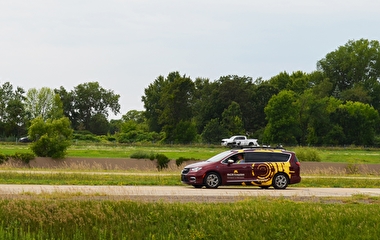autonomy by 2020.
Autonomous vehicles could spark transformative changes not just in mobility, but also in matters as diverse as urban form and retail shopping. At a conference held by the University of Minnesota, state and national leaders explored the various legal, ethical, technical, and policy dimensions of these vehicles.
The conference, held October 31, featured more than 25 leaders from academia, government, industry, and other interests.
From the U of M, RP Braun/CTS Chair David Levinson hypothesized some possible directions:
- Autonomous vehicles enable more car sharing. Instead of the sunk cost of car ownership, people pay the marginal cost per trip—and thus make fewer trips.
- Shared cars can be right-sized for any given trip, so fewer large cars are needed. Increased safety reassures people about driving smaller cars.
- Smaller cars travel closely together on narrower lanes, so capacity increases.
- As networks get faster, people choose to travel farther. Cities decentralize and more megacities and “placeless places” develop.
- At the same time, inner cities get denser, as less space is needed for parking and garages.
- With lower labor costs, transit becomes more cost-effective.
- Driverless trucks lower delivery costs. Combined with drones, robotics, and online shopping, retail shopping declines.
Frank Douma, associate director of the Humphrey School’s State and Local Policy Program, noted that at least 90 percent of transportation fatalities are attributable (at least in part) to human error, according to national estimates; the driving population is aging, and current funding is not keeping up with the needs of the existing transportation system. “With the potential to address these points by creating a safer, more accessible, and more efficient system, decision makers need to pay attention to the development of these technologies and make adjustments to transportation policy that will encourage the most beneficial deployment scenarios,” said Douma, an event moderator.
Max Donath, director of the Roadway Safety Institute, cautioned that significant challenges with reliability and robustness must be addressed before full automation is possible, and suggested that limited commercial and military uses could precede wider adoption. Janet Creaser, a research fellow with the U’s HumanFIRST Laboratory, added that in the short term, traffic incidents could actually increase as drivers learn how to interact with automated systems.
State Senator Scott Dibble, chair of the Transportation and Public Safety Committee, predicted that creating a legal framework for autonomous technology will be a fairly long political process. Persuading legislators that such systems are safe will be “a pretty high bar” to get over, he continued, and liability and insurance will be big barriers—and lengthy ones. Data privacy issues will also be a “huge subject of conversation,” he said. “We’ll take a close look at the experiences of other states ... and learn how those early experiments are working.”
The event was made possible through funding and support from the Humphrey School of Public Affairs, the Transportation Policy and Economic Competitiveness Program, CTS, and the Minnesota Journal of Law, Science & Technology.
Articles based on the conference will be published in the spring 2015 issue of the Minnesota Journal of Law, Science & Technology, a multidisciplinary journal edited by University of Minnesota faculty and law students.



